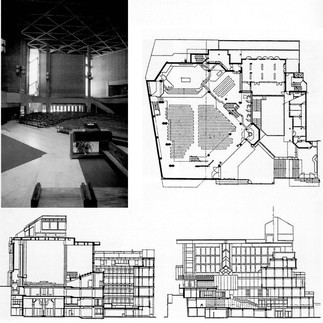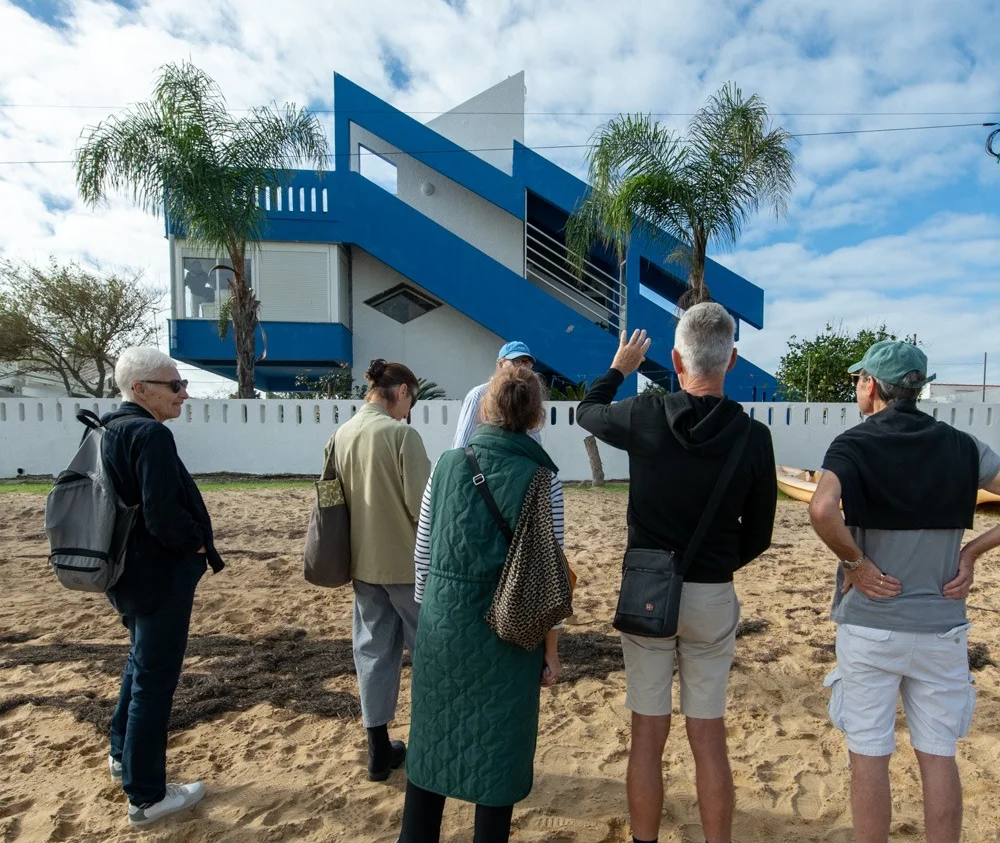Architect Nuno Teotónio Pereira: 100th anniversary
The Portuguese Architects Association announced in 2022 that, due to the 100th anniversary of the birth of architect Nuno Pereira, who died in 2016, they would put his work in the spotlight. I was introduced to Portugal for the first time in 1986. I was sent by my development organization DOG/ICCO to the “Instituto das Linguas” in Lisbon where I was challenged to learn the Portuguese language in two months time.
After the course I would work for them as an architect at the 'Council of Churches' in Mozambique. This former Portuguese colony in Africa had become independent in 1975 and was not doing very well in 1986. The Council of Churches had a large emergency & aid program in the country that was severely affected by the civil war and other disasters. European, American and Canadian organizations sent money and people to assist the country in these difficult times. The Council of Churches wanted to set up its own construction office in the capital of Maputo and build a center in each of the 10 provinces for the distribution and coordination of emergency aid and structural aid. For the next 3 years I would be busy working on it....
In Lisbon, my daily program consists of four hours of private lessons in the morning from "professora Isabel" from the language institute located at Praça de Camões in Bairro Alto. The afternoon I spent studying the material acquired and doing my homework. I usually do this in the shady gardens of the Gulbenkian Museum. There is time for entertainment in the evenings. During that time I regularly hang out with fellow co-operator Joost. We visit the Fado bars in Bairro Alto together, go to a movie or to the Jazz Club behind the Rossio. Joost has been in Lisbon for some time and met Helena who works there at the Center for African Studies. She regularly accompanies us to films such as “Hannah and her sisters” by Woody Allen or to the Jazz Club. When she asks what I do, I tell her I'm an architect. Oh, just like my father, she says. Her father is not only an architect, but he also seemed to be the president of the Portuguese Architects Association & and a famous architect as I only found out later...
Nuno Teotónio Pereira and the "Igreja do Sagrado Coração de Jesus" & social housing in "Bairro do Restelo" in Lisbonn
My interest is awakened and I ask her if I can have an appointment with her father sometime. An appointment is quickly arranged and the first thing I see when I enter the architectural office of Nuno Teotónio Pereira is a poster on the wall of the "Biennale of Dutch Young Architects 1985” in the Beurs van Berlage in Amsterdam. With our office KohlenVanbunningen Architecten & Ingenieurs, we were one of the 10 agencies selected to participate in this Biennale. I am very surprised to come across “our poster” here, but that is also an opening as a topic of discussion. One of his employees did an internship in the Netherlands and and hung the poster above his drawing table.
After Nuno showed me some projects from his agency, with a certain name in Portugal, we return to my choice for a country like Mozambique. “Wait, I have something for you,” he says suddenly “I'll just get it.” A little later he hands me over a Portuguese architectural magazine with the theme title: “O Vitruvius Mozambicanus.” Vitruvius was a Roman military architect (85-20 BC) from ancient times who - with his book “Architecture in Ten Books” - provided a clear overview of architecture at that time. The magazine is entirely devoted to the works in Mozambique of the architect Amancio d'Alpoim Miranda “Pancho” Guedes. In this magazine, his projects, which are divided into "25 Architectural Styles" in which he works, are described in detail. He worked in Mozambique from the 1950s until independence in 1975. Like many Portuguese, he left the country after the revolution, to become professor of architecture at the University of Witwatersrand. He trained many South African architects there.
Pancho Guedes" with his building "The Laughing Lion" and an apartment complex in Maputo
The magazine became my guide in Mozambique in the search for the architecture of architect and artist Pancho Guedes. With the help of the descriptions and photos in the magazine - mostly on an early Sunday morning and usually with a group of fellow co-operators - I went looking for his colorful and imaginative buildings with names as "The Laughing Lion", "The Fat House" or "The Elephant”. They are often easy to find, because of the combination of his modernist style with special details in the facades and the African decorations that he sometimes used in the concrete work.
Regional functionalism, where regional mainly stands for the personal style of Pancho Guedes together with a mixture of international and local architectural styles. The “Laughing Lion” looks Gaudian with its rounded balconies, shell roofs and walls like a dragon with African patterns in bright colors. Here the artist and the architect come together based on the drawing by his 4-year-old son Toni and the question whether his father could also make 'such a building'. The “Laughing Lion” is located in a district of the city of Maputo that is partly a military zone. Difficult to visit, but with the help of a bottle of Cuban rum we managed. Panco Guedes with his construction production in different styles has always remained my point of reference in my view on Portuguese modernist architecture.
Because Pancho Guedes had worked for various church organizations - such as the Swiss Mission - during his time in Mozambique, I also regularly came across his buildings during my work. At one point I even met a draftsman who had previously been working for Guedes. We sometimes went out together and he showed me the buildings he had worked on. It took him some effort because the good man was almost blind and could sometimes only recognize the vague outlines of the buildings he had worked on.
Modernist architecture in the Algarve by Manuel Laginha in Olhão and by Manuel Gomes da Costa in Faro and Tavira.
I am eternally indebted to Nuno Teotónio Pereira for introducing me to the work of Pancho Guedes. This allowed me to get to know and experience his imaginative modernism and his 25 design styles in a cosmopolitan city like Maputo.
In the Algarve, where I now regularly stay, I got to know a number of contemporarie architects , such as Manuel Gomes da Costa, Manuel Laginha and Antonio Vicente de Castro, who, based on the same fascination for the post-war “Modernism”, searched for a new visual language. of contemporary balanced compositions consisting of geometric facades with horizontal sun blinds, beautifully detailed brickwork with shadow openings and sometimes a braided grille. Suitable for the regional context in which they tried to capture the spirit of the times.




































